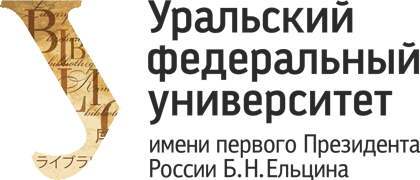The uncanny in bazhov’s tales
DOI:
https://doi.org/10.15826/qr.2014.2.051Keywords:
20th century Russian literature; Soviet society; S. Freud; P. P. Bazhov; Malachite Casket; motif analysisAbstract
P. P. Bazhov’s tales are considered through the prism of S. Freud’s theory of the uncanny (Unheimlich). The analysis focuses on the previously unstudied motifs of death and sexuality in the tales and connects the inner atmosphere of Malachite Casket with the atmosphere of fear and terror, which accompanied the creation of tales, as well as substantiates the new interpretation of The Mistress of the Copper Mountain as an alternative to the nationalism of Stalin’s epoch. The phantasm of escape, clearly present in the tales, corresponds to the situation of escape from Soviet history. The elimination of historical traumas by means of sinister images connects Bazhov’s creative work to magical historism (A. Etkind). Bazhov’s tales were at once frightening for the Soviet reader, as they told of death, fatal temptation and paralyzing impotence in one’s hometown, but also soothing, since they made it possible to articulate the trauma resulting from the historical loss of local culture and the fear of grand motherland. Thus, Bazhov’s tales resonated within the Soviet individual and the collective unconscious. This can explain the success of Malachite Casket with generations of Soviet people and the tale’s cultural untranslatability.
References
Blazhes, V. V. (2003). K istorii sozdaniya bazhovskih skazov [To the history of creating Bazhov’s tales]. Izvestia UrGU [Proceedings of the Ural State University], 28, 5–11.
Blazhes, V. V. (2007). “Mednoj Gory′ Hozyajka” [The mistress of the copper mountain]. In V. V. Blazhes, M. A. Litovskaya (Eds.). Bazhovskaya e′nciklopediya [Bazhov encyclopedia]. Yekaterinburg: Sokrat; Izd-vo UrGU.
Bogdanov, K. A. (2009). Vox populi: Fol′klorny′e zhanry′ v sovetskoj kul′ture [Vox populi: Folklore genres in Soviet culture]. Moscow: NLO . Bogdanov, K., Nikolozi, R. & Murashov, Yu. (Eds.). (2013). Dzhambul Dzhabaev: Priklyucheniya kazahskogo aky′na v Sovetskoj strane: st. i materialy′ [Dzhambul Dzhabaev: the adventures of Kazak akin in the Soviet country: articles and materials]. Moscow: Nov. lit. obozrenie.
Coats, K. (1997). Underwriting the Uncanny: The Role of Children’s Literature in the Economy of the Subject. Paradoxa: Studies in World Literary Genres, 3, 489–497.
Etkind, A. (2013). Warped Mourning: Stories of the Undead in the Land of the Unburied. Stanford: Stanford University Press.
Freud, S. (1955). Symbolism in Dreams. In S. Freud. Standard Edition. J. Stracheu, A. Freud (Transl.). London: The Hogarth Press and the Institute of Psycho-Analysis. (Vol. 15).
Freud, Z. Zloveshhee [Omnious]. A. V. Garadzha (Transl.). Retrieved from: http://www.gumer.info/bibliotek_Books/Psihol/Freid/Zlov.php
Hubbs, J. (1988). Mother Russia: The Feminine Myth in Russian Culture . Bloomington: Indiana UP.
Ivanov, A. (2004). Ugorskij arhetip v demonologii skazov P. P. Bazhova [Ugrian archetype in demonology of P. P. Bazhov’s tales]. In V. V. Blazhes (Ed.). Tvorchestvo Bazhova v menyayushhemsya mire [The works by Bazhov in changing world] (p. 142–155). Yekaterinburg.
Kruglova, T. A. (2004). P. P. Bazhov i socialisticheskij realism [P. P. Bazhov and socialist realism]. In V. V. Blazhes (Ed.). Tvorchestvo Bazhova v menyayushhemsya mire [The works by Bazhov in changing world] (p. 18–27). Yekaterinburg.
Mihnyukevich, V. (2007). Fol′klorny′e istoki skazov P. P. Bazhova [Folklore origins of P. P. Bazhov’s tales]. In V. V. Blazhes, M. A. Litovskaya (Eds.). Bazhovskaya e′nciklopediya [Bazhov encyclopedia] (p. 449–454). Yekaterinburg: Sokrat; Izd-vo UrGU.
Miller, F. (2006). Stalinskij fol′klor [Stalin folklore]. St. Petersburg: Akademicheskij proekt.
Nahamkin, S. (2004). Egor Gajdar: “U menya korni, kotory′mi mozhno gordit′sya” [Egor Gaidar: “I have the origins, that can be proud of”]. Izvestiya-Nauka. 21 yanvarya [NewsScience]. 21 January. Retrieved from: http://izvestia.ru/news/286028#ixzz2viSHDnio
Propp, V. Ya. (1979). Fol′klor i dejstvitel′nost′ [Folklore and reality]. Moscow: Nauka.
Riordan, J. (Transl.) . (1974). The Mistress of the Copper Mountain: Tales from the Urals. London: F. Muller.
Terras, V. (Ed.). (1985). Handbook of Russian Literature. New Haven; London: Yale UP.
Trites, R. S. (2001–2002). The Uncanny in Children’s Literature . In Children’s Literature Association Quarterly 26, 4, 162–211.
Williams, A. M. (1944). The Malachite Casket: Tales from the Urals. London; New York: Hutchinson.
Yustus, U. (2000). Vozvrashhenie v raj: soczrealizm i fol′klor [Return to paradise: socialist realism and folklore]. In H . Gunter, E . Dobrenko (Eds.). Soczrealisticheskij kanon [Scial legalistic canon] (p. 70–86). St. Petersburg: Akademicheskij proekt.
Zipes, J. (1982). The Potential of Liberating Fairy Tales for Children. New LiteraryHistory: A Journal of Theory and Interpretation 13, 2, 309–321.










